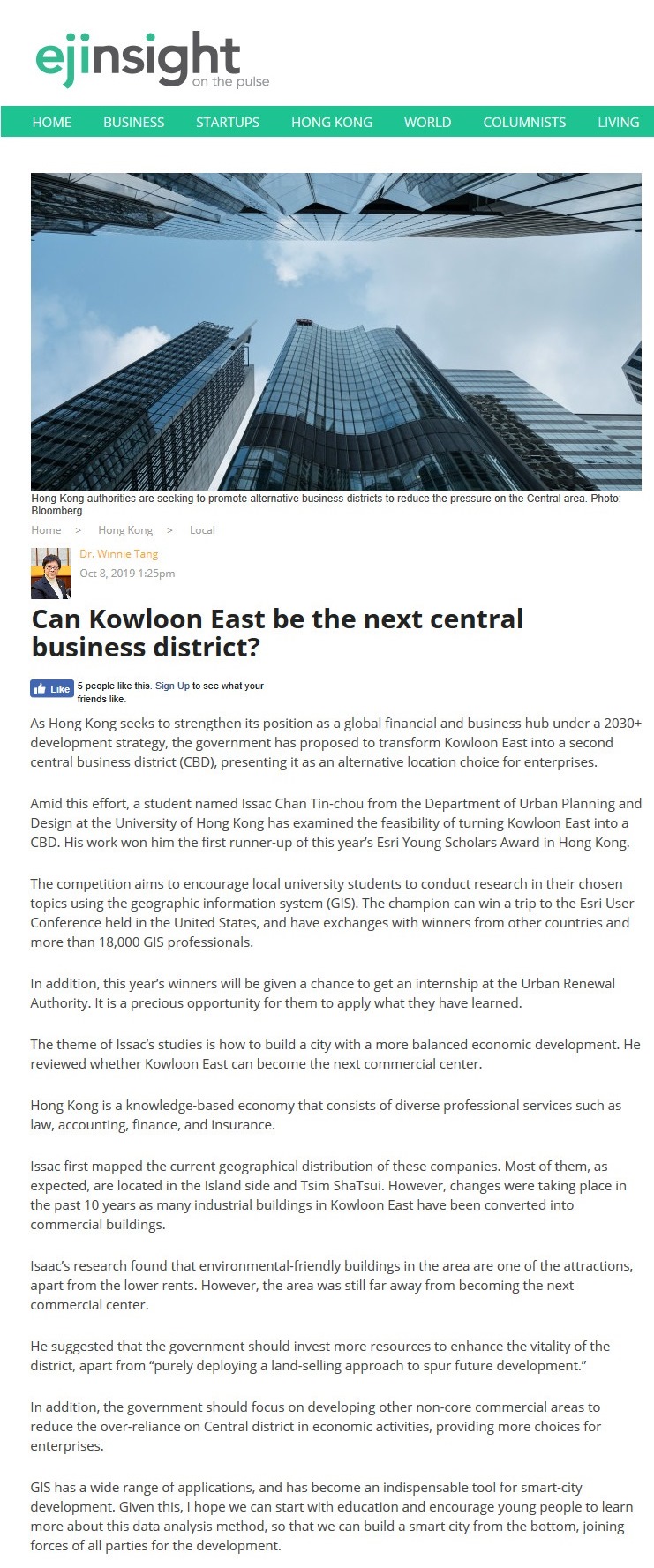網上版請按此

Can Kowloon East be the next central business district?
As Hong Kong seeks to strengthen its position as a global financial and business hub under a 2030+ development strategy, the government has proposed to transform Kowloon East into a second central business district (CBD), presenting it as an alternative location choice for enterprises.
Amid this effort, a student named Issac Chan Tin-chou from the Department of Urban Planning and Design at the University of Hong Kong has examined the feasibility of turning Kowloon East into a CBD. His work won him the first runner-up of this year's Esri Young Scholars Award in Hong Kong.
The competition aims to encourage local university students to conduct research in their chosen topics using the geographic information system (GIS). The champion can win a trip to the Esri User Conference held in the United States, and have exchanges with winners from other countries and more than 18,000 GIS professionals.
In addition, this year's winners will be given a chance to get an internship at the Urban Renewal Authority. It is a precious opportunity for them to apply what they have learned.
The theme of Issac's studies is how to build a city with a more balanced economic development. He reviewed whether Kowloon East can become the next commercial center.
Hong Kong is a knowledge-based economy that consists of diverse professional services such as law, accounting, finance, and insurance.
Issac first mapped the current geographical distribution of these companies. Most of them, as expected, are located in the Island side and Tsim ShaTsui. However, changes were taking place in the past 10 years as many industrial buildings in Kowloon East have been converted into commercial buildings.
Isaac's research found that environmental-friendly buildings in the area are one of the attractions, apart from the lower rents. However, the area was still far away from becoming the next commercial center.
He suggested that the government should invest more resources to enhance the vitality of the district, apart from "purely deploying a land-selling approach to spur future development."
In addition, the government should focus on developing other non-core commercial areas to reduce the over-reliance on Central district in economic activities, providing more choices for enterprises.
GlS has a wide range of applications, and has become an indispensable tool for smart-city development. Given this, I hope we can start with education and encourage young people to learn more about this data analysis method, so that we can build a smart city from the bottom, joining forces of all parties for the development.
Dr. Winnie Tang
Adjunct Professor, Department of Computer Science, Faculty of Engineering and Faculty of Architecture, The University of Hong Kong